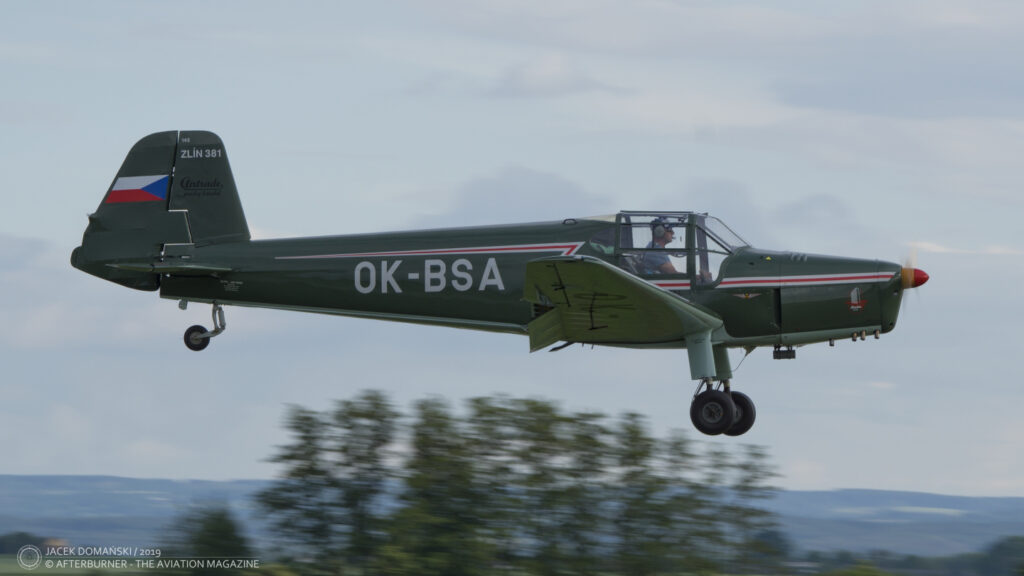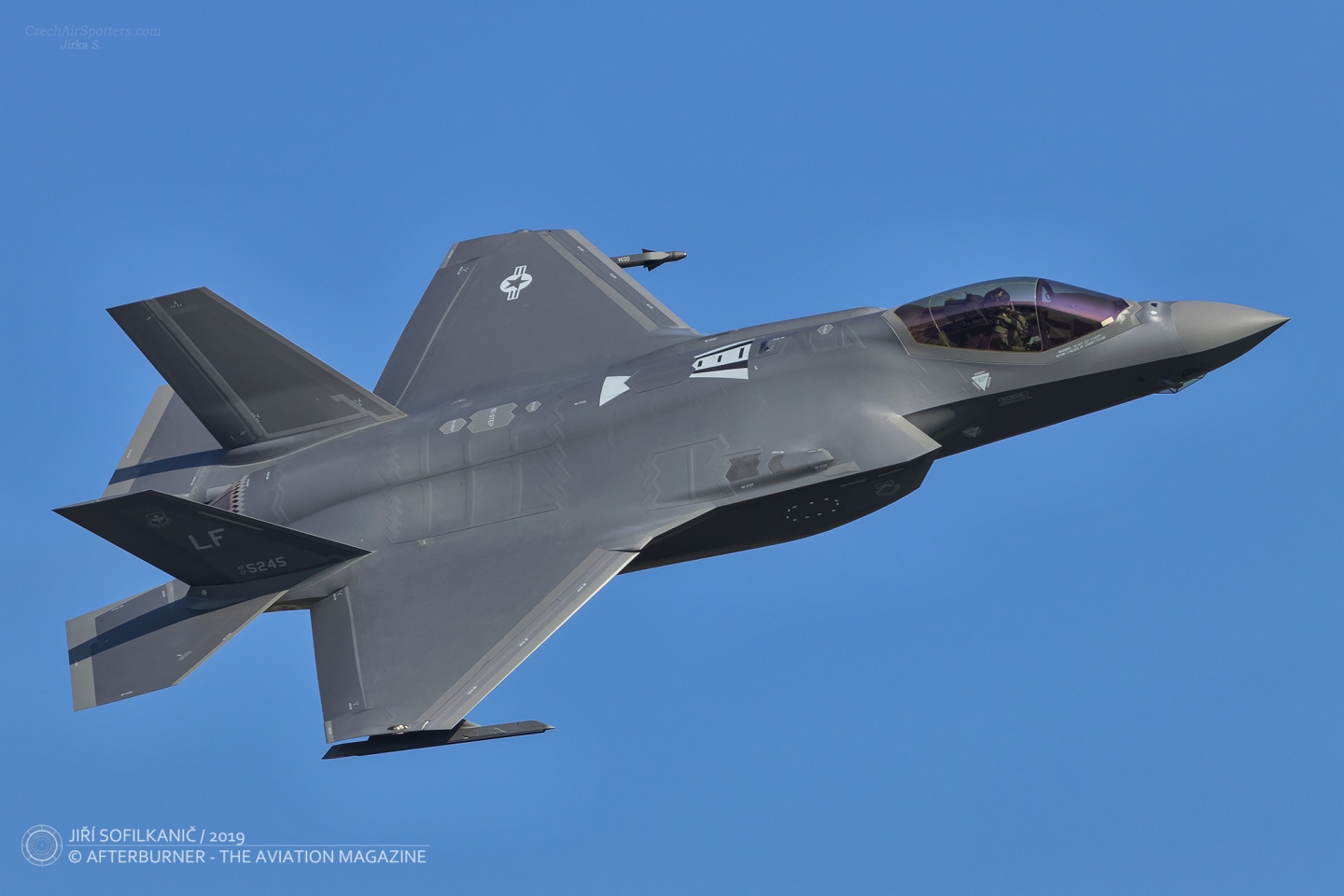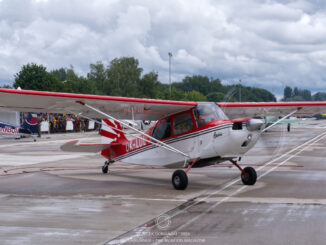 Zlín Z-381 (c/n 145, OK-BSA), a Czechoslovak derivative of Bücker Bü 181 Bestmann training aircraft, flying display at 29th edition of Aviatická pout airshow, Pardubice, May 2019.
Zlín Z-381 (c/n 145, OK-BSA), a Czechoslovak derivative of Bücker Bü 181 Bestmann training aircraft, flying display at 29th edition of Aviatická pout airshow, Pardubice, May 2019.
At the end of the 1930s, the Bü 181 concept was introduced to Luftwaffe authorities where it was treated with a reserve attitude. That aeroplane – made by German aviation manufacturer Carl Clemens Bücker and his Swedish designer, Anders Anderson – represented new approach to the idea of military trainer. The constructors dropped the idea of a tandem seat configuration, instead implementing a completely new cockpit with two doors, side-by-side and fully adjustable seats, and dual controls.
It must be admitted here that the abovementioned configuration was chosen also for another reason. As the Bü 181 project was neither ordered nor financed by Reichsluftfahrtministerium (the Air Ministry of the Third Reich), Bücker had to bear all the risk related to its development. In case his new aircraft would not be approved for the Luftwaffe, the Bü 181 could easily be turned into modern sport and tourist aeroplane and offered for civilian market.
In February of 1939 the prototype of the Bü 181 performed its maiden flight. Shortly after, it was approved as the new standard primary trainer for the German Air Force. The aeroplane also received an official name, Bestmann (English: mate – an officer on a merchant ship subordinate to the master).
Serial production of the Bü 181 had been commenced in 1940, at Bücker plant in Rangsdorf. Nevertheless, Luftwaffe demand for the trainer was so high that soon licence manufacturing was launched – by Fokker in the Netherlands and Zlín Aviation Works in the Protectorate of Bohemia and Moravia.
According to German Wikipedia, a total of 2681 examples of the Bü 181 was built until the beginning of 1945. The Bücker factory made 1187 examples, 786 were built at Fokker and another 708 by Zlín in the Protectorate.
In addition, between 1943 and 1945, approximately 120 examples of the Bü 181 were manufactured under license in Sweden. The aircraft was produced by Hägglund & Söner AB for the Swedish armed forces and designated Sk 25.
Shortly after its introduction to operational service with the Luftwaffe, Bestmann became not only the standard trainer, but also popular liaison and courier aeroplane. Additionally, in spring of 1945, the Bü 181 was adopted to the role of ´tank destroyer´ with two anti-tank Panzerfaust grenade launchers mounted under its wings. Although several aircraft were converted for that last-chance variant, they did not play any role in the last months of the World War II but suffered great losses.
After the war, production of the Bü 181 was continued in Czechoslovakia. The aircraft was made for both civilian and military purposes, initially designated Z-181 and C-6, respectively. In 1947, Z-281 / C-106 modified variant, powered by locally developed engine, was introduced. Next, it was replaced by Z-381 version, equipped with more powerful Walter Minor-III engine. Production of the Bü 181 derivatives was ceased in 1953.
In the 1950s, Czechoslovakia sold the licence for manufacturing the Zlín Z-381 to Egypt. They were made by Heliopolis Aircraft Works and named Gomhouria (English: republic). Approximately 300 examples of those aeroplanes were built and operated by air forces of Egypt and other Arab countries.
The Z-381 pictured above was found in the USA, where it was sold at the beginning of the 1980s, and brought back to the Czech Republic by private owner in 2013. Although the tail part comes from the Swedish Sk 25, that aeroplane is one of the very few Czechoslovak-made derivatives of the Bü 181 that survived until today. It was restored to airworthy condition after a labour-intensive reconstruction and now the aeroplane frequently participates in domestic aviation events. Since 2021, the Z-381 is operated by Centrum leteckého výcviku (Flight Training Centre) in Pardubice.



